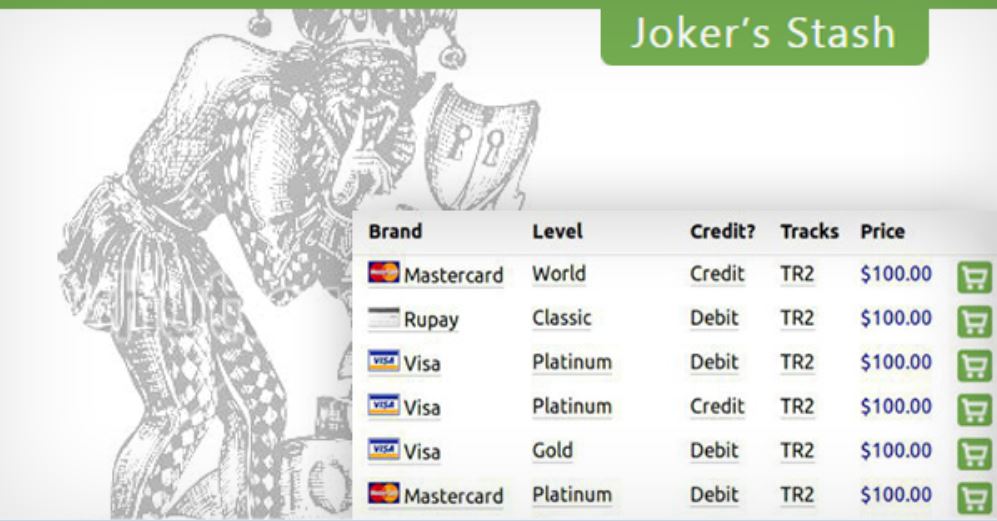Introduction
In the shadowy corners of the internet, where anonymity reigns and criminal marketplaces thrive, one name ruled the underground for years: JokerStash. From 2014 to 2021, JokerStash was the go-to marketplace for stolen credit card data—fueling a global industry of fraud, identity theft, and digital crime. But how did it rise to infamy? And why did it disappear so suddenly?
The Emergence of JokerStash
Launched around 2014, JokerStash wasn’t just another black-market site. It was a full-fledged digital marketplace tailored to cybercriminals. The platform allowed users to buy stolen credit card information, bank account credentials, and other personal data—completely anonymously.
What made it stand out? Its smooth interface, automation, and decentralized nature. Hosted across Tor and blockchain DNS systems, it became practically untouchable by law enforcement for years.
Understanding Carding
To grasp JokerStash’s significance, you need to understand carding—the practice of stealing and using credit card data illegally.
Cybercriminals obtain this data through:
- Phishing scams
- Malware infections
- Point-of-sale breaches
- Insider leaks
- Massive data hacks
The data is then sold on platforms like jokerstash, where buyers use it to make fraudulent purchases or withdraw cash.
JokerStash’s Role in the Cyber Underworld
JokerStash was more than a marketplace—it was a brand. Sellers listed fresh batches of card dumps and CVVs. Buyers could browse based on bank, location, card type, and even test a few numbers before committing to a bulk purchase.
It offered:
- Loyalty programs
- Automated verification tools
- Buyer protection (yes, really)
- Detailed quality ratings
These features earned it an almost cult-like following in the carding community.
Technologies Used
JokerStash was a tech marvel—in a sinister way.
- Tor Network: Hidden from the public internet
- Blockchain DNS: Resistant to takedowns
- Cryptocurrencies: Bitcoin was the currency of choice
- 2FA and encryption: To protect both buyers and sellers
This layered security made JokerStash nearly bulletproof for years.
Major Data Breaches Linked to JokerStash
Some of the biggest data breaches ended up fueling JokerStash’s inventory, including:
- Wawa (2019): Over 30 million card details
- Buca di Beppo & Other Earl Enterprises brands (2019): Huge volumes of stolen POS data
- Sonic Drive-In, Forever 21, and more
Whenever a major breach happened, JokerStash was usually the first to monetize it.
Why JokerStash Was So Successful
Its success came from a deadly combination of factors:
- Speed: Quickest to list new stolen data
- Trust: Reputation-based system ensured quality
- Scale: Millions of cards, updated daily
- Support: User-friendly tools, forums, and even customer service
It wasn’t just a site—it was an ecosystem.
Law Enforcement on the Trail
As JokerStash grew, so did the attention it attracted. Agencies like the FBI, Europol, and Interpol began closing in. But JokerStash stayed one step ahead with ever-evolving hosting and encryption techniques.
Despite this pressure, JokerStash continued to operate… until it didn’t.
The Shutdown
In a surprising move, the anonymous operator known as “Joker” announced a complete shutdown of the site in January 2021.
In a farewell message, Joker said:
“We are retiring. Forever.”
No law enforcement announcement followed. No arrests were made public. It simply vanished.
Impact on the Dark Web
JokerStash’s exit created a power vacuum. Suddenly, the carding world was left scrambling. Copycats emerged, but none with the same trust or structure.
Its departure also caused prices of stolen cards to spike, while fraud volumes temporarily dropped—a rare victory for cybersecurity.
Lessons from JokerStash
JokerStash taught the world a few harsh truths:
- Cybercrime is professional, scalable, and global
- Dark web markets can operate undetected for years
- No one is immune—retailers, restaurants, and banks alike
More than anything, it proved that security must evolve faster than threats.
Where Are We Now?
While JokerStash is gone, carding is not. Markets like BidenCash, BlackBazaar, and others continue the legacy. However, new tech (like AI-powered fraud detection and multi-factor authentication) has made life tougher for cybercriminals.
Still, the fight is far from over.
Final Thoughts
JokerStash didn’t just sell stolen data—it shaped the dark web’s economy. It showed how a single platform could impact millions of lives, cost billions in fraud, and force entire industries to change.
Its fall was dramatic. Its legacy? Unforgettable.





Comments